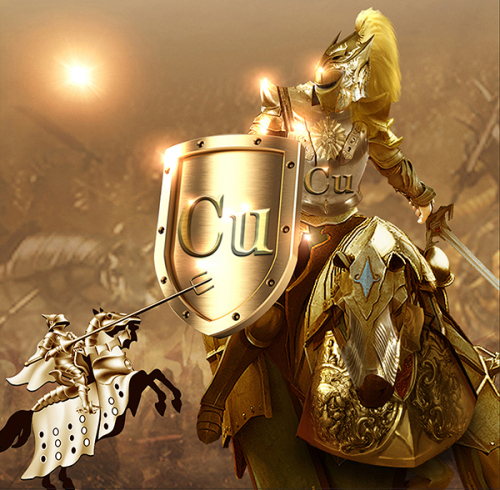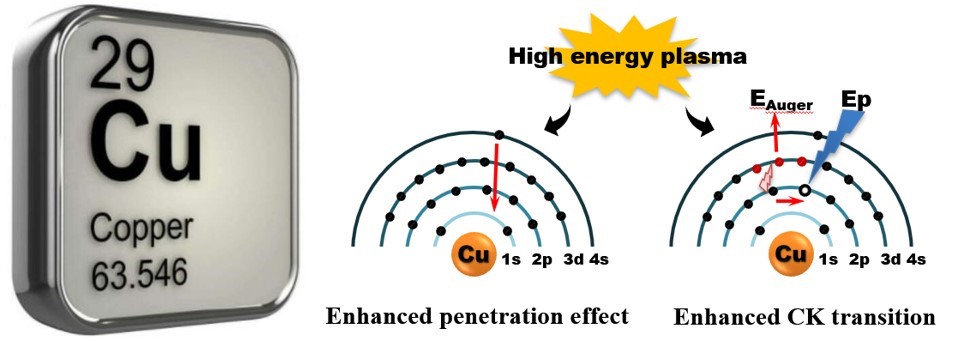

Freezing Cu as a noble metal like catalyst with oxidization-resistance property facilitates the controlling of selective hydrogenation. This behavior is similar to a warrior with a solid armor resisting the attack on the battlefield. (Image by SUN Jian and YU Jiafeng)
As a non-noble metal, copper oxidizes more easily to positive valence (Cu+ or Cu2+) than same-family elements Au or Ag. In general, this chemical property is mainly determined by electron structure. Can we change the chemical properties of an element by regulating its electron structure? Can Cu act as a noble metal in catalytic reactions?
A team led by Dr. SUN Jian of the Dalian Institute of Chemical Physics (DICP) of the Chinese Academy of Sciences (CAS) gives a positive answer. The team's recently published paper in Science Advances shows that the electron structure of Cu can be changed, assisted by high energy plasma, making Cu exhibit significantly different catalytic behaviors than normal Cu in selective hydrogenation reactions.
The dimethyl oxalate (DMO) hydrogenation reaction, a typical multistep catalytic reaction producing methyl glycolate (MG), ethylene glycol or ethanol, was selected as a probe reaction for copper. In this reaction, the common product over supported Cu/SiO2 catalysts is one of the latter two owing to the inevitable co-existence of Cu+ and Cu0 for deep hydrogenation.
The sputtered (SP) Cu, which is bombarded by high energy argon plasma, can be "frozen" at zero valence when exposed to oxidation or reaction atmosphere at a very wide range of temperature, presenting noble-metal-like behaviors (see figure below).
In DMO hydrogenation, a high selectivity (87%) towards the preliminary hydrogenation product, MG, a high-value chemical, was observed. The molecule level free energy surface in various reaction pathways by DFT calculation also verifies that "frozen" Cu0 is crucial for preliminary hydrogenation.

Unique electron configuration of the 29th element Cu was excited by high energy plasma, resulting in the variation of its chemical property. (Image by SUN Jian and YU Jiafeng)
The study, entitled "Freezing Copper as a Noble Metal-Like Catalyst for Preliminary Hydrogenation," was conducted in collaboration with Dr. WEI Xiaoxuan of Zhejiang Normal University, and supported by the Youth Innovation Promotion Association of CAS.

86-10-68597521 (day)
86-10-68597289 (night)

52 Sanlihe Rd., Xicheng District,
Beijing, China (100864)

